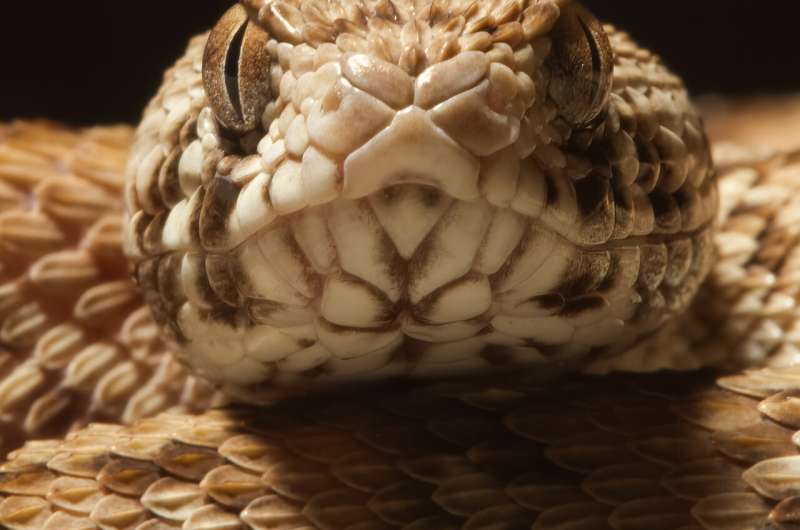This article has been reviewed according to Science X's editorial process and policies. Editors have highlighted the following attributes while ensuring the content's credibility:
fact-checked
peer-reviewed publication
proofread
Bloody insights: Organs-on-chip ready to help snake venom research

A 3D model of imitation blood vessels will make it possible to see exactly how snake venom attacks blood vessels, without having to use laboratory animals. This new research model, called an organ-on-a-chip, was developed by a research team from Vrije Universiteit Amsterdam, MIMETAS and Naturalis Biodiversity Center.
The article called "Using organ-on-a-chip technology to study haemorrhagic activities of snake venoms on endothelial tubules" appears in Scientific Reports.
Roughly one hundred thousand people die annually from the effects of a snake bite and four times as many sustain chronic injuries. Research into how snake venom works is needed to arrive at a solution, but remains difficult to implement. A research team from the Vrije Universiteit Amsterdam (VU), MIMETAS and Naturalis Biodiversity Center, has now proven for the first time that snake venom can be examined on 3D imitation blood vessels.
Organ-on-a-chip
This new approach to 3D imitation blood vessels improves on traditional research methods, such as using laboratory animals or cell cultures, by mimicking human blood vessels. "The advantage of such a blood vessel model for venom research is that it takes into account several important influences that the body faces, like the flow of blood, or the construction and shape of a blood vessel," explains venom expert and first author of the study, Mátyás Bittenbinder of VU and Naturalis.
The 3D blood vessel model, called MIMETAS' OrganoReady Blood Vessel HUVEC, thus contributes to better understanding the damaging effects of snake venom on blood vessels and the rest of the body.
"The model provides accurate insight into how toxins attack blood vessels. This knowledge will help us develop better methods to treat snake bites, while also reducing the need to do studies on mice," says Bittenbinder.
Effect of venom
The functioning of the blood vessel model was tested with the venom of an Indian cobra (Naja naja), West-African carpet viper (Echis ocellatus), many-banded krait (Bungarus multicinctus) and Mozambique spitting cobra (Naja mossambica).
A bite from a venomous snake often causes severe (internal) bleeding. This is because the venom attacks the circulatory system, destroying blood vessels and creating blood clots. Worldwide, scientists are searching for a solution. "If we better understand which substances are in snake venom, we will also know better how to neutralize the toxins," Bittenbinder explains.
Snake bites are a humanitarian crisis that affects millions of people each year but rarely makes the news. It is estimated that between 80,000 and 140,000 people die each year from poisonous snake bites. Another 400,000 survive but become blind or lose a hand, foot, or leg as a result of a bite.
More information: Mátyás A. Bittenbinder et al, Using organ-on-a-chip technology to study haemorrhagic activities of snake venoms on endothelial tubules, Scientific Reports (2024). DOI: 10.1038/s41598-024-60282-5



















